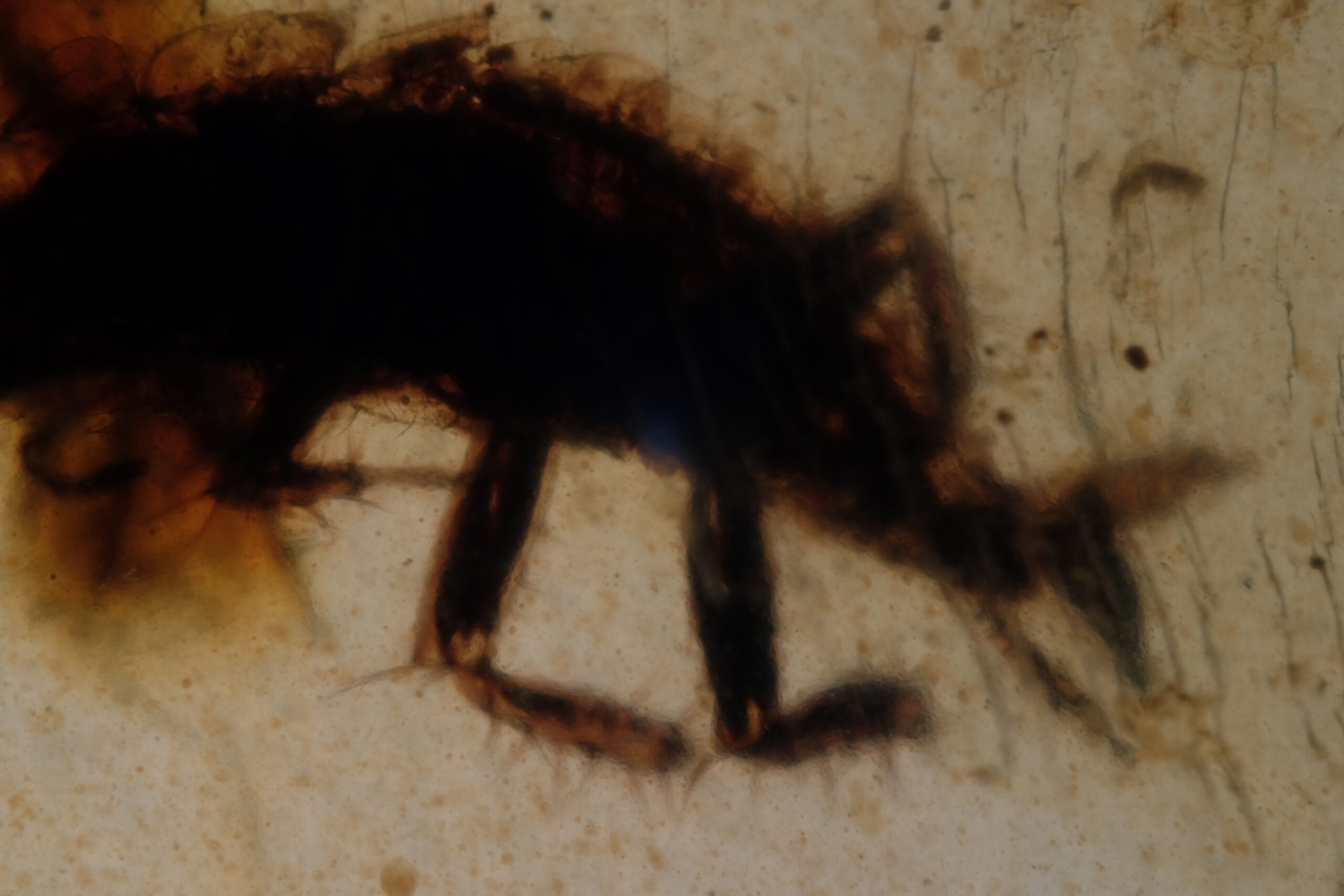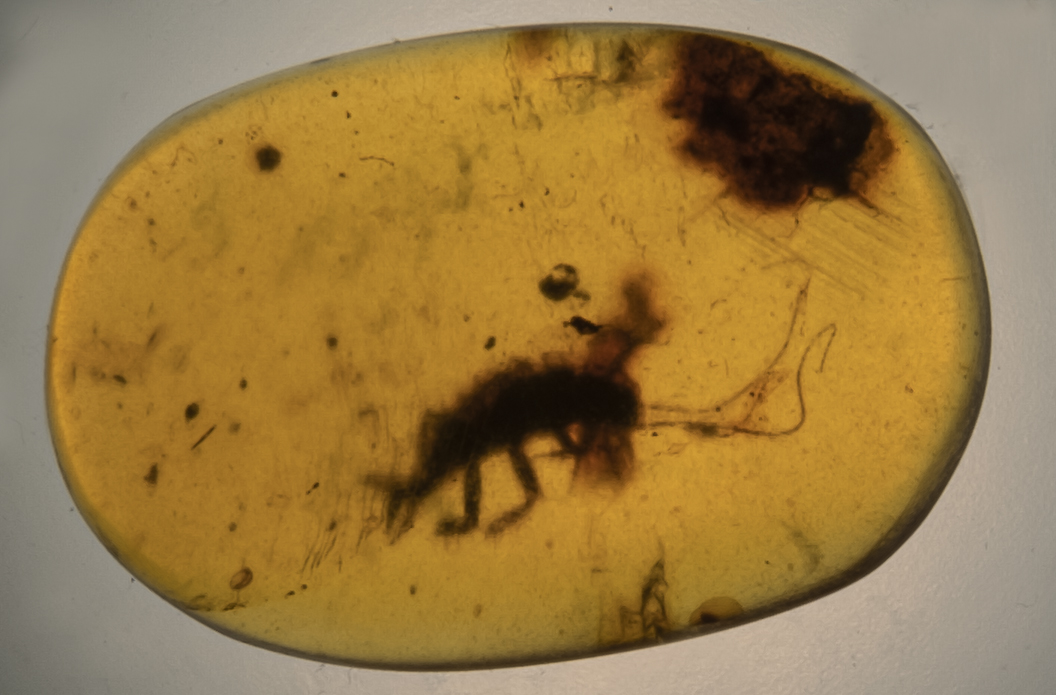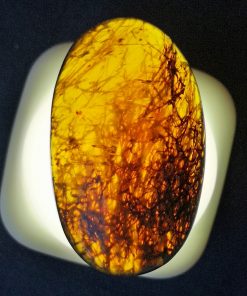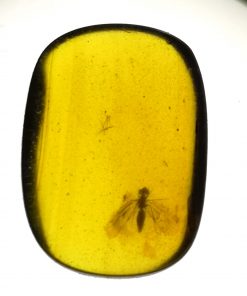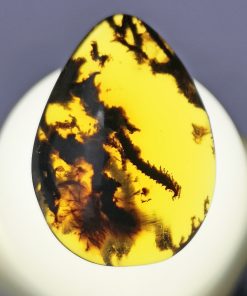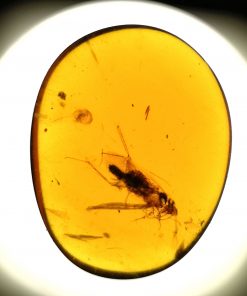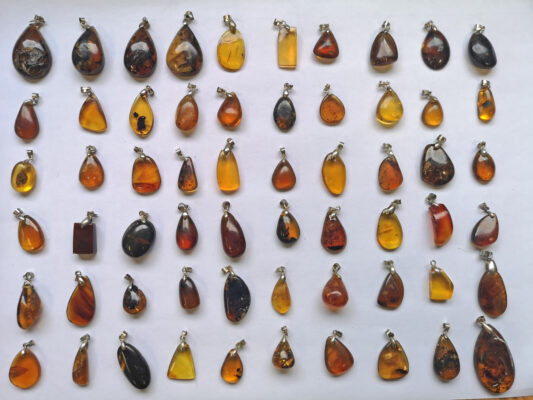Description
Amidst the amber repository of Myanmar’s Kachin region, an enthralling relic emerges—a meticulously preserved insect specimen ensconced within the golden resin, boasting an exceptional array of scientific curiosities. This extraordinary find showcases an insect, adorned with a profusion of setae, or fine hairs, intricately distributed across its exoskeletal surface.
These setae, observed in abundance upon the insect’s body, constitute a striking feature indicative of specific taxonomic classifications and ecological adaptations. The dense coverage of these fine hairs, varying in length and distribution, potentially signifies diverse functions within the ancient ecosystem. They might have served as sensory organs, thermal regulators, or even offered protection against environmental stressors, unveiling the intricate survival strategies of this ancient arthropod.
Moreover, the entomological fascination within this amber specimen extends to the unique configuration of its antennae. Unlike the conventional straight or segmented antennae often observed in insects, this particular specimen exhibits a remarkable attribute—a pair of sinuous or “squiggly” antennae, a distinctive feature rarely documented within entomological literature.
The convoluted nature of these antennae, though peculiar, presents an intriguing avenue for understanding sensory adaptations or communication mechanisms in this ancient insect. The complex undulations might have facilitated enhanced olfactory reception, tactile perception, or even contributed to intricate mating rituals, providing a glimpse into the behavioral and evolutionary adaptations of this enigmatic creature.
In the annals of entomology and paleontology, the discovery of this hairy insect, adorned with myriad setae and embellished with sinuous antennae, encapsulates a trove of scientific marvels, unveiling the nuanced intricacies of prehistoric life within the confines of Myanmar’s Kachin Amber.
Dimensions: 18.35×12.36×3.41mm
Weight: 2.68 ct
